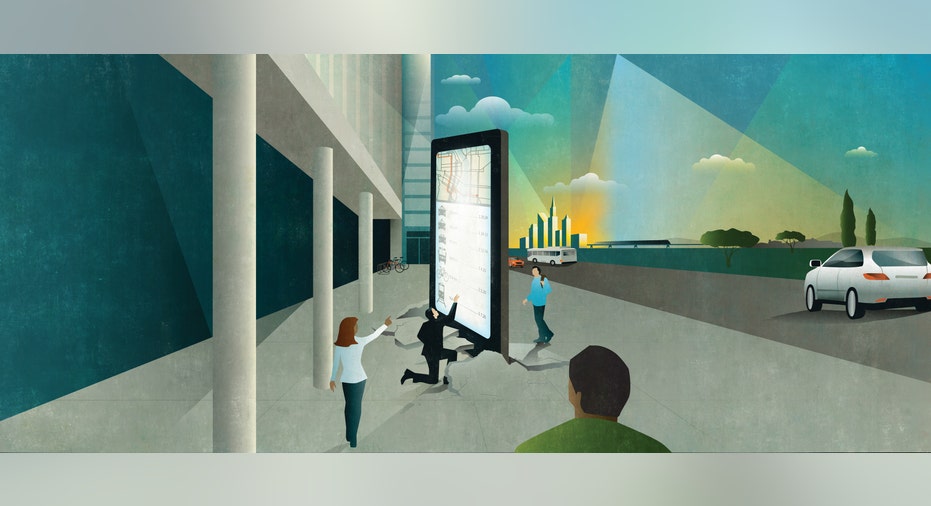The Rise of MaaS: An Integrated System of Mobility

An up-and-coming revolution in mobility is known as MaaS: Mobility as a Service. Building on existing transportation technologies, MaaS offers a real opportunity to make travel more efficient, user friendly, and tailored to what individual consumers want.
MaaS will rely on a digital platform that integrates all aspects of trip planning—booking, ticketing, and paying—across all modes of transportation, whether public or private. No longer will a traveler have to research a train time, book a flight, and pay for a car ride separately to get somewhere; with MaaS, one single app will handle it all.
According to Deloitte, the goal is an integrated system of mobility so convenient “that [consumers] opt to give up their personal vehicles for city commuting, not because they’re forced to, but because the alternative is more appealing.”
Why MaaS?
Interest in MaaS has spread all over the world, as pilot programs have sprouted up in Helsinki, Paris, Eindhoven, Gothenburg, Montpellier, Vienna, Hanover, Las Vegas, Los Angeles, Denver, Singapore, and Barcelona. These various programs all incorporate different elements of transportation—some include public means of transportation, some private, some peer-to-peer—but all are new ways of tackling the age old problems of traffic and congestion.
MaaS would help fix congestion without adding more roads or transit routes, a problematic solution that is not only expensive and time-consuming, but could also actually lower quality of life if more land is turned into highways. MaaS would provide a cheaper, cleaner, and faster way of getting around, and would also provide flexibility for consumers.
With the rapid growth in bikeshare programs and ride-hailing services, consumers have shown an affinity for new mobility options and apps. There were only 11 total bikeshare programs in 2004 and now they exist in over 50 countries. Meanwhile, Uber has expanded to more than 500 cities in over 70 countries during their six year existence.
Deloitte reports that a natural next step would be to capitalize on the popularity of these programs and, combining with trip-planning apps, integrate them into one platform for customers to plan and pay for travel services.
Core Elements of MaaS
While the bells and whistles of a MaaS system will vary depending on the modes of transportation available in certain locations, there are a few core elements that most systems will likely incorporate.
“To work effectively, MaaS would require the following conditions: widespread penetration of smartphones on 3G/4G/5G networks; high levels of connectivity; secure, dynamic, up-to-date information on travel options, schedules, and updates; and cashless payment systems.” Collaboration would be paramount between the transportation providers, local governing authorities, and payment processors, among others, who would all enable this to happen.
Physical infrastructure changes should be integrated, accounting for seamless connections between different services. Transit stations can be updated to allow passengers to transition from one medium to another: trains to bikeshare or subway to bus, etc.
Transportation operators will provide the actual services that MaaS is trying to arrange for, so their inclusion is a must. Without public transportation operators buying in, we’ll be left with smaller operations providing services with their own app and payment methods, making it impossible for a large-scale adoption of one unified MaaS system.
With regard to payment, there are two types in practice right now: monthly subscriptions or pay-as-you-go. An effective MaaS system will need to ensure that each transportation mode is properly compensated when a consumer books a trip that spans multiple providers, regardless of if they are a monthly member or go the a la carte route. Deloitte points out that thus far, this issue has been a stumbling block in many existing services.
The most essential element of all MaaS systems will be the platform it runs on, and the trusted mobility advisors that “link the services of the various private and public operators, arranging bookings, and facilitate payments through a single gateway.” Whether an app or webpage, this program will tie together all elements, providing options via a data provider that feeds real-time traffic and transit information, and enables ticketless travel so users can go from one leg of their trip to another with just their smartphone.
How to Make MaaS a Reality
City governments will play an essential role in a MaaS system, not just by unifying all the necessary parties—and ensuring buy-in from the private sector—but by setting safety regulations and security measures to protect the citizens it represents.
Adding more means of transportation to already crowded urban areas is not a viable solution. But changing the way the existing modes of transportation function to meet the needs of the consumer with a unified solution is beneficial to the city, the people who would use it, and the private sector companies looking to profit.
The mass transit options that already serve the public today should continue to do so, but the government should encourage partnership with the private sector; their innovation and capabilities are invaluable. By creating a system that the private sector can integrate with, city governments can set the essential ground rules, but leave the actual technology to the players who do it best.
As Deloitte points out, “Finding the regulatory sweet spot is key. Too much regulation and the private sector may find it difficult to innovate or participate; too little regulation and the public interest is not served.”
The technologies needed for MaaS already exist; they just need to be pulled together in the same direction. Combining real-time data, smartphone networks, consumer preferences, and maybe even autonomous driving is a reality that could be right around the corner. Bringing all the relevant players to the table is the next step in the future of mobility.